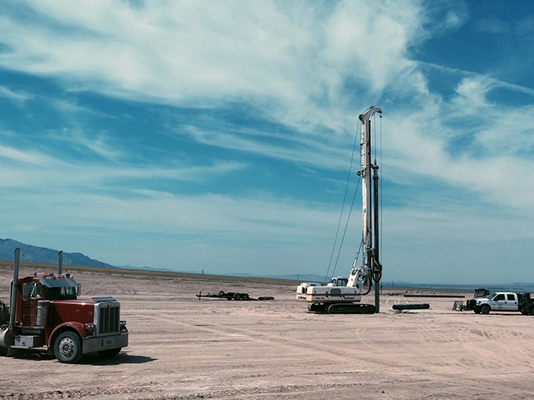Key Takeaways
- Geothermal energy – heat created within the earth – is an emerging alternative energy source but questions remain about its economics and how to best harvest it.
- Researchers are studying many different aspects of geothermal energy at a DOE site in Utah, and UT Austin engineers received a grant to look at increasing efficiency of extracting heat from the sub-surface.
- Geothermal is appealing because it can be extracted without burning fossil fuels, creates minimal emissions, does not require storage and is nearly unlimited in supply.
Figuring out how to efficiently extract heat from the earth’s sub-surface and use it as a power source is a priority across the energy industry. Cockrell School engineers are on the front lines of this push to learn more about geothermal energy and the best ways to harvest and utilize it.

Texas Engineers are part of a group of 17 teams awarded $46 million for geothermal projects at a U.S. Department of Energy site in Utah. The projects fall under the umbrella of DOE's Frontier Observatory for Research in Geothermal Energy (FORGE) initiative, which aims to advance carbon-free geothermal projects with the potential to supply power to homes.
The University of Texas at Austin team is led by Mukul Sharma, a professor in the Cockrell School's Hildebrand Department of Petroleum and Geosystems Engineering. Sharma and his team will simulate and help implement several hydraulic fracturing techniques to geothermal wells at the FORGE site. Fracturing deviated and horizontal wells is a common way to extract oil and gas from the earth, but it remains relatively new as a way to harness geothermal energy.
“We don’t really know the detailed geometry of these fractures,” Sharma said. “So, we need to understand which method for fracturing works best and how we can design the right parameters for that method to make sure fractures are uniform are and connect the injection and production wells."
The UT Austin team will receive about $4 million over two-and-a-half years for the project. Once the engineers simulate different fracturing methods they will go into the field and implement them on newly drilled wells at the FORGE site.
Sharma and his team will work with Shell on fiber-optic technology to monitor the wells after they are drilled. His team recently published a paper with Shell on fracture diagnostics with fiber optic sensors in four different shale basins.
Fracturing for geothermal energy presents some unique challenges. Extracting geothermal heat often requires drilling deeper and hotter reservoirs than typical oil and gas wells. Many materials and instruments used for this type of work aren't built to withstand these higher temperatures.
Ultimately, Sharma said, the goal is to develop a set of recommendations and best practices for developing Enhanced Geothermal Systems that can more efficiently extract geothermal energy.
Geothermal has promise as a renewable energy source because it can be extracted without burning any fossil fuels and produces minimal emissions. It is available all the time because it's not dependent on outside conditions like solar or wind. It provides baseload power and does not require energy storage devices, potentially avoiding huge costs related to batteries.
"But, as of today, no one has been able to show geothermal can be done in a commercially viable manner," Sharma said.
Sharma hopes that implementing techniques popular in oil and gas operations, such as horizontal drilling and fracturing, will help significantly improve the rate and efficiency of energy extraction. And that could go a long way toward making geothermal a more acceptable and affordable energy source.
"The challenge is to bring the cost down and the power generation capacity up, so we can achieve a target cost that makes it viable."







